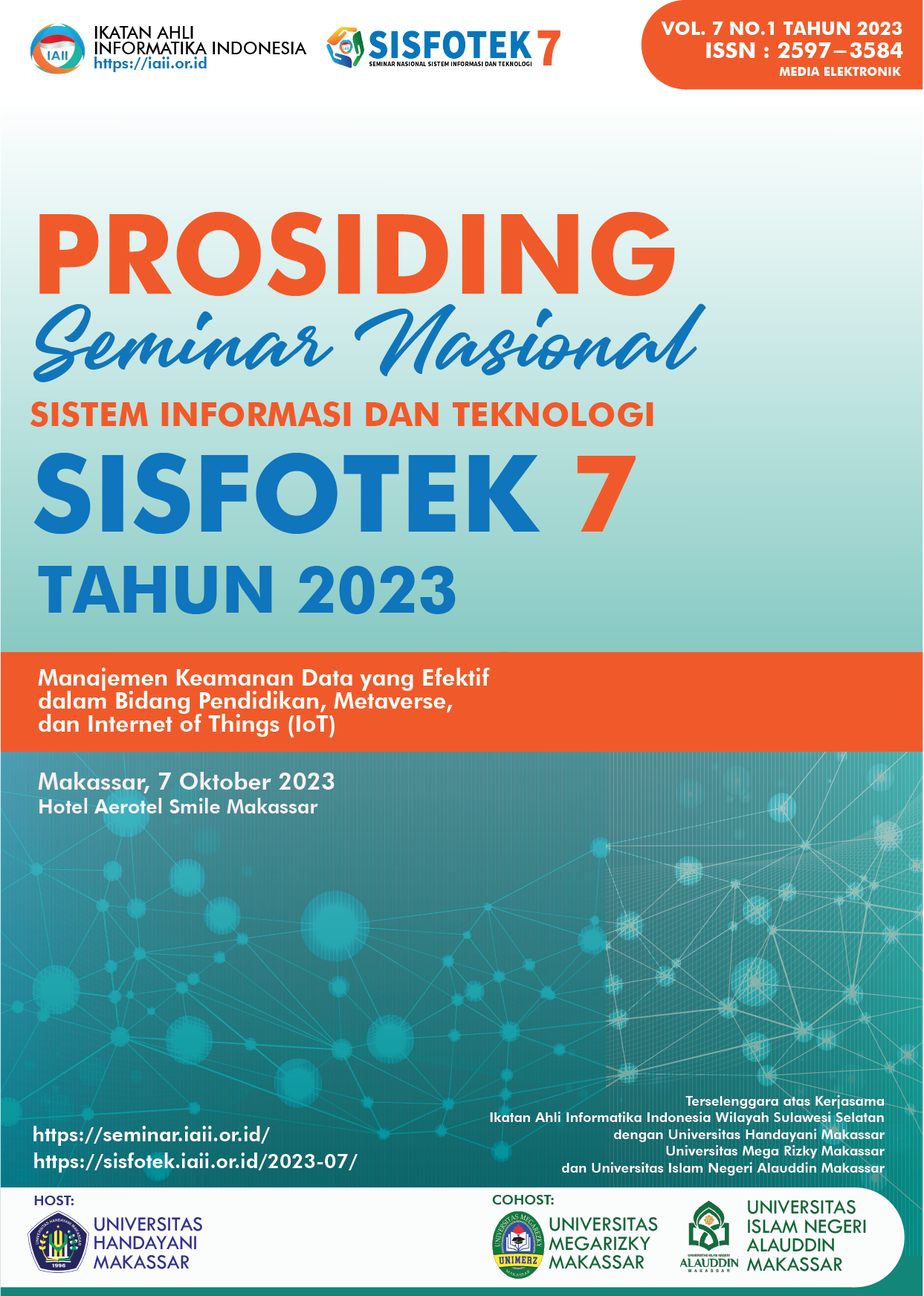Klasifikasi Status Gizi Balita Menggunakan Algoritma K-Nearest Neighbor (KNN)
Keywords:
k-nearest neighbors, klasifikasi, gizi balitaAbstract
Nutrition is an important component contained in food which includes carbohydrates, protein, vitamins, minerals, fat and water which are needed by the body for growth, development and maintenance which are used directly by the body to repair body tissue. Nutritional needs are an important factor in the growth and development of children, especially children aged under five years (toddlers), because what happens in the first five years determines their growth and development year after year. To achieve good growth and development, strong nutrition is needed. Assessment of the nutritional status of toddlers can be determined through human body measurements known as anthropometry. The reference standards for toddler nutritional status are Body Weight according to Age (WW/U) which describes the child's relative weight for age, Body Weight according to Height (WW/TB) which describes whether the child's weight is in accordance with his height growth and Height according to Age (TB/U) describes a child's height growth based on age. The method used to determine the nutritional status of toddlers is the KNN method, which is to find the closest distance between the evaluated data and a number of K neighbors closest to the test data. Toddler nutrition data uses 4 classifications, namely insufficient, normal, poor and more. The amount of data used in this research was 170 data with a data composition of 90% consisting of 150 training data and 10% testing data totaling 20 data. Data that is normalized using Z-Score gets an accuracy of 95%, class precision of 98.08% and class recall of 93.75%, data normalized using the min-max technique gets an accuracy of 85%, class precision of 95.00% and class recall of 79.17%, Meanwhile, KNN modeling without normalization produces an accuracy of 80%, precision of 82.4% and a class recall value of 75%.
References
S. Anraeni, E. R. Melani, and H. Herman, “Ripeness Identification of Chayote Fruits using HSI and LBP Feature Extraction with KNN Classification,” Ilk. J. Ilm., vol. 14, no. 2, pp. 150–159, 2022, doi: 10.33096/ilkom.v14i2.1153.150-159.
D. Fitrianingsih, M. Bettiza, and A. Uperiati, “Klasifikasi Status Gizi Pada Pertumbuhan Balita Menggunakan K-Nearest Neighbor (Knn),” Student Online J., vol. 2, no. 1, pp. 106–111, 2021.
M. H. Wahyudi, “Sistem Pendukung Keputusan Penentuan Status Gizi Balita Menggunakan Metode Naive Bayes,” Semin. Nas. Teknol. Inf. dan Multi Media, no. 1, pp. 25–30, 2018.
D. A. N. Wulandari and A. Prasetyo, “Sistem Penunjang Keputusan Untuk Menentukan Status Gizi Balita Menggunakan Metode Fuzzy Tsukamoto,” J. Inform., vol. 5, no. 1, pp. 22–33, 2018, doi: 10.31311/ji.v5i1.2440.
A. Yudhana, I. Riadi, and M. R. Djou, “Determining eligible villages for mobile services using k- NN algorithm,” Ilk. J. Ilm., vol. 15, no. 1, pp. 11–20, 2023.
M. Yunus and N. K. A. Pratiwi, “Prediksi Status Gizi Balita Dengan Algoritma K-Nearest,” JTIM J. Teknol. Inf. dan Multimed., vol. 4, no. 4, pp. 221–231, 2023.
Downloads
Published
How to Cite
Issue
Section
License
Copyright (c) 2022 Seminar Nasional Sistem Informasi dan Teknologi (SISFOTEK)

This work is licensed under a Creative Commons Attribution 4.0 International License.
http://creativecommons.org/licenses/by/4.0







